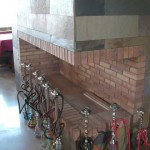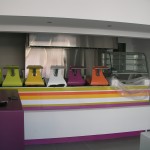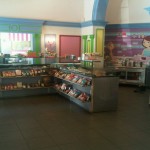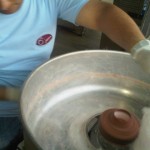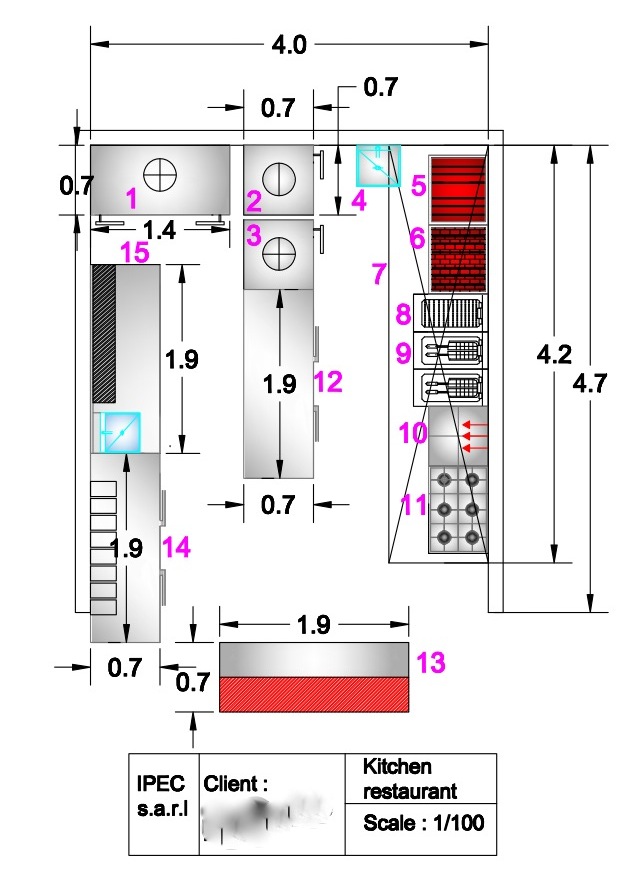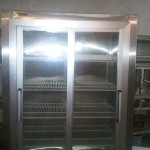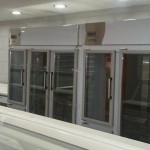Types: Reach-in refrigerators and freezers come in one-, two- and three-door/compartment configurations. Smaller undercounter reach-ins can provide added storage space for products needed at a display-preparation or service point. Reach-ins can be confi
gured as combination refrigerator-freezers, too. Pass-through reach-ins allow access from both sides. Glass-front reach-ins offer easy identification of contents and are suitable for grab and go and merchandising displays.
Capacities/Footprints: Depending on the number of doors, reach-in units range from 18 to 57 inches wide, 29 to 36 inches deep, and from 78 to 84 inches high. Storage capacity can range from 16 to 80 cu. ft., depending on the number of doors and other factors such as the placement of lights and other key components.
Energy Source(s): Reach-in refrigerators typically operate on 115 volts of electrical power. Most smaller one- and two-door reach-in freezers use 115 volts as well, but three-door freezers may use 208 to 230 volts.
Standard Features: Top-end reach-in units are typically manufactured of aluminum and stainless steel in a variety of combinations. Reach-ins generally utilize 20 to 30 lbs. of rigid or foamed-in-place polyurethane insulation to help maintain interior temperatures.
At the minimum, reach-in refrigerators are manufactured to maintain an interior temperature of 40 degrees F or below, while reach-in freezers should be able to maintain interior temperatures around 0 degrees F. Some freezers can reach temperatures as low as -20 degrees F.
While a one-door unit typically requires only a single compressor up to ½-horsepower, a two-door unit may need a ¾-horsepower compressor and a three-door unit requires up to a 1-horsepower compressor. Compressors are typically mounted on the top or bottom of the unit.
Almost any reach-in can be fitted with either one full-door or two half-doors. Standard features include interior lighting; shelving; legs or casters; external thermometers; automatic condensate evaporation; and magnetic gaskets and locks.
New Features/Technology/Options: Newer models have a microprocessor temperature control that helps maintain temperatures. Airflow systems potentially keep units from working as hard to recover after doors are opened.
Legs can be installed on units in lieu of casters.
Other options include digital or dial thermometers; temperature monitoring and alarms; epoxy-coated, chrome-plated or stainless steel shelves; pan slides; fluorescent lights; LED lighting and advanced electronic controls.
Many utilities also offer rebates toward the purchase of qualified products.
Key Kitchen Applications: Reach-ins are essential for holding foods safely and keeping them easily accessible in storage, prep and service areas.
Purchasing Guidelines: The size of a facility, style of food preparation and production demand levels will help determine the operation’s requirements for refrigeration.
The decision whether to use tray slides or standard shelving also depends on the application of the unit.
Also take into consideration cabinet electrical power requirements and available supply. There also needs to be adequate ventilation to exhaust the refrigeration system’s heat. Half doors can help reduce air exchange and minimize intrusion into aisle ways, which can disrupt work flow.
Maintenance Requirements: Each week, thoroughly clean cabinets using simple soap and water. Avoid using caustic cleaning material. Clean condenser coils regularly — the exact frequency of the cleanings will depend on the surroundings. In some cases, weekly cleanings will be necessary. Regularly check the gaskets to ensure a proper seal forms around the door. Specifying a unit with heavy-duty casters makes it easier for staff to move it and clean behind.
Energy Efficiency: Depending on the municipality, some units are eligible for rebates from various utility companies and other governing bodies.
Food Safety and Sanitation Essentials: Reach-ins must hold foods consistently at 40 degrees F or below, as specified by HACCP requirements, and must be able to recover temperatures quickly. Ensure that the refrigeration system is adequately sized for the amount and type of product as well as usage.




